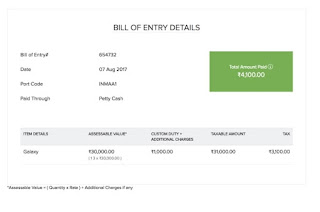Unlocking the Potential of GST Software: A Comprehensive Guide
In today’s digital age, efficient tax management is paramount for businesses of all sizes. Understanding and navigating the intricacies of Goods and Services Tax (GST) is crucial to ensure compliance and maximize financial efficiency. In this article, we will delve into various aspects of GST, including GSTR-07, GSTR-9, GSTR-1, GSTR-3B, GSTR-6, and GSTR-9C, along with the indispensable tool of GST software.
Demystifying GSTR-07
GSTR-7, an essential component of GST compliance, pertains to the details of transactions related to tax deducted at source (TDS). Businesses are required to file this return on a monthly basis, providing a comprehensive overview of TDS transactions during that period. Utilizing GST software streamlines this process, ensuring accuracy and compliance.
GSTR-9: A Year-End Obligation
GSTR-9 is the annual return that summarizes the GST returns filed during the financial year. This comprehensive report offers insights into a business’s financial activities, making it an invaluable resource for auditing and strategic decision-making. Leveraging GST software simplifies the compilation of this data, reducing the risk of errors and discrepancies.
GSTR-1: Reporting Outward Supplies
GSTR-1 is a monthly or quarterly return that outlines a business’s outward supplies of goods or services. Timely and accurate submission of GSTR-1 is imperative, as it facilitates seamless input tax credit for recipients. GST software automates this process, minimizing the chances of omissions and errors.
GSTR-3B: Simplifying Tax Payments
GSTR-3B is a monthly return that serves as a summary of a taxpayer’s self-assessed tax liability. It includes details of both input and output tax. Efficiently managing GSTR-3B is essential for ensuring compliance and avoiding penalties. GST software simplifies calculations and ensures timely submissions.
GSTR-6: The Input Service Distributor’s Obligation
For businesses acting as Input Service Distributors (ISD), GSTR-6 is a critical return. It involves reporting the distribution of input tax credit to units or branches of the same organization. The complexity of this task is greatly reduced through the use of GST software, which automates calculations and allocation.
GSTR-9C: The Auditor’s Companion
GSTR-9C is a reconciliation statement that needs to be certified by a chartered accountant or a cost accountant. It reconciles the figures provided in GSTR-9 with the audited financial statements of the business. GST software facilitates this reconciliation process, ensuring accuracy and compliance with regulatory requirements.
The Power of GST Software
In this digital era, GST software emerges as a game-changer for businesses of all scales. It automates various GST-related processes, from data entry to return filing, significantly reducing the risk of errors. Moreover, it provides real-time insights, enabling proactive decision-making and compliance monitoring.
Embracing the Digital Age
As businesses navigate the complex landscape of GST compliance, embracing technology is essential for staying ahead. GST software not only simplifies processes but also enhances accuracy and efficiency. It empowers businesses to focus on growth while ensuring adherence to tax regulations.
Conclusion
In conclusion, understanding and effectively managing various GST components, such as GSTR-07, GSTR-9, GSTR-1, GSTR-3B, GSTR-6, and GSTR-9C, is imperative for businesses. Leveraging GST software can streamline these processes, making compliance easier and more efficient. Embrace technology to unlock the full potential of your business in the world of GST.
Masters India Facebook | Masters India Twitter | Masters India LinkedIn | Masters India Goodreads | Masters India Medium

Comments
Post a Comment